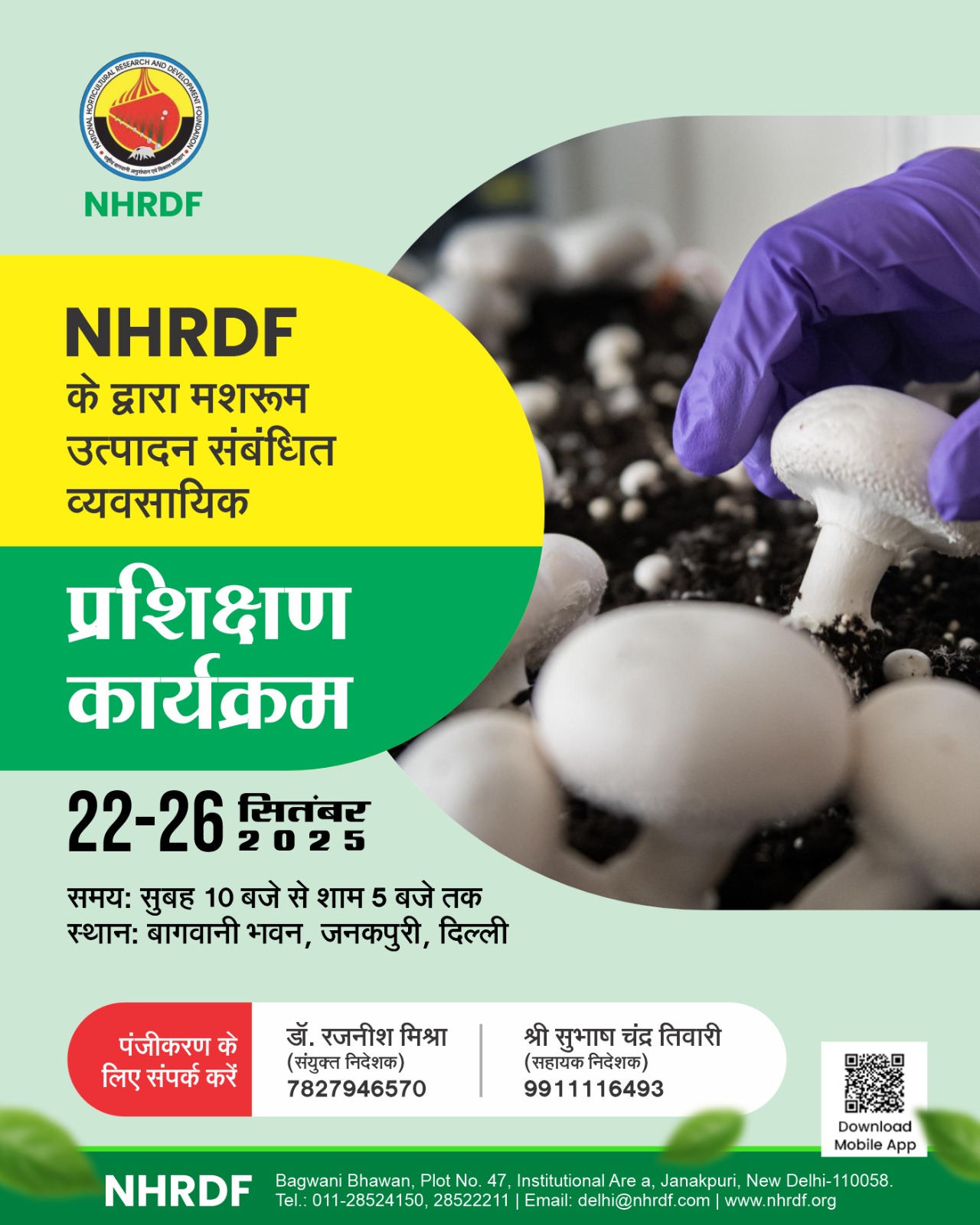My Popup


Garlic (Allium sativuml) is one of the important bulb crops grown and used as a spice or condiment throughout India. It is also important foreign exchange earner and consumed by almost all people who take onion. Garlic has higher nutritive value than other bulb crops. It is rich in proteins, phosphorous, potassium, calcium, magnesium and carbohydrates. Ascorbic acid content is very high in green garlic. Nutritive composition of fresh by peeled garlic cloves and dehydrated garlic powder is as follows:
Nutritive Value of Garlic
|
Particular |
Fresh peeled garlic cloves |
Dehydrated garlic powder |
|
Moisture (%) |
62.80 |
5.20 |
|
Protein (%) |
6.30 |
17.50 |
|
Fat (%) |
0.10 |
0.60 |
|
Mineral matter (%) |
1.00 |
3.20 |
|
Fibre (%) |
0.80 |
1.90 |
|
Carbohydrates (%) |
29.00 |
71.40 |
|
Energy K. Cal |
145.00 |
-- |
|
Calcium (%) |
0.03 |
0.10 |
|
Phosphorus (%) |
0.30 |
0.42 |
|
Potassium (%) |
-- |
0.70 |
|
Magnesium (mg/100 g) |
71.00 |
-- |
|
Iron (%) |
0.001 |
0.004 |
|
Niacin (%) |
-- |
0.70 |
|
Sodium (%) |
-- |
0.01 |
|
Copper (mg/100 g) |
0.63 |
-- |
|
Manganese (mg/100 g) |
0.86 |
-- |
|
Zinc (mg/100 g) |
1.93 |
-- |
|
Chromium (mg/100 g) |
0.02 |
-- |
|
Vitamin A (IU) |
0.40 |
175.00 |
|
Nicotinic acid (mg/100 g) |
0.40 |
-- |
|
Vitamin C (mg/100 g) |
13.00 |
12.00 |
|
Vitamin B (mg/100 g) |
16.00 |
0.68 |
|
Riboflavin B2 (mg/100 g) |
0.23 |
0.08 |
|
Thiamin (mg/100 g) |
0.06 |
-- |
Source: Vegetable crops in India T.K. Bose & M.G. Som (Ed.) & NIN, Hyderabad
Healthy garlic bulbs contain allicin, colourless, odourless and water-soluble amino acids. On crushing the garlic bulbs the enzyme allinase breaks down into allin to produce allicin of which the principal ingredient is odoriferous diallyl disulpide. Garlic contains about 0.1% volatile oil. The chief constituents of oil are diallyl disulfide (60%), diallyl trisulfide (20%), allyl propyl disulfide (6%), a small quantity of diethyl disulfide and probably diallyle polysulfide. Diallyle disulfide possesses the true garlic odour. Garlic has been cultivated for thousands of years. It is the most ancient cultivated vegetables giving pungency of the genus Allium. Original abode of garlic is said to be Central Asia and Southern Europe especially Mediterranean region. Some authorities consider that Allium longicuspis Regael, which is endemic to Central Asia, is the wild ancestor and spread in ancient times to Mediterrenean region. It is known in Egypt in Predynastic times, before 3000BC and also to ancient Greeks and Romans. It has long been grown in India and China. Garlic was carried to the Western hemisphere by the Spanish, Pourtuguese and French. Garlic was not liked by Romans due to strong odour. It was used in England as early as first half of the 16th century. The early domestication of garlic took quite different turn from that of seed propagated leek and onion. Garlic became exclusively vegetatively propagated by cloves or bulbils. Some cultivars are reported to produce flowers but there is no seed setting. Garlic cultivars differ in maturity, bulb size, clove, clove size and number, scale colour, bolting and flowering habits.
Area, Production and Productivity
Garlic is grown worldwide in 14.66 lakh hectares, with a total production of 248.37 lakh tons and productivity of 16.94 tons/ha during the year 2012 as per FAO. China is the world leader in area (8.50 lakh ha) as well as in production (200.00 lakh tons), followed by India (2.02 lakh ha and 11.50 lakh tons). Other major garlic-growing countries are Egypt, Republic of Korea, Russian Federation, Myanmar, Bangladesh, USA, Argentina, Ukraine, Brazil, Spain, Ethiopia, and Iran.
The productivity of garlic is highest (24.36 tons/ha) in Uzbekistan followed by Egypt, China, USA, and Republic of Korea among the major garlic growing countries. India, although holds second place in area and production, the productivity is very low (5.69 tons/ha).
The world trade of garlic through export is 1.98 million tons, China ranks first (1.66 million tons), followed by Argentina, Spain and Egypt. Indonesia, Brazil, Vietnam, Bangladesh, Malaysia, Pakistan, USA, Russian Federation, Thailand and UAE are major importing countries. India also occasionally imports garlic from China.
Currently in India the production of garlic is 12.59 lakh tons from an area of 2.47 lakh hectares with the productivity of 5.09 tons/ha. There is a considerable increase both in area 49,400 to 247,520 hectares and the production from 167,400 to 12,59,270 tons during last two decades. In Garlic production in India Madhya Pradesh tops in area with 60,000 hectares, followed by Rajasthan (59,450 ha) and Gujarat (39,200 ha). The production is highest in Gujarat (2, 77,460 MT) followed by Madhya Pradesh (2, 70,000 MT) contributing a major share (43.47%) of the total production. The productivity in Madhya Pradesh is less than national average. Unawareness of farmers about improved varieties, climate, soil and agro-techniques, diseases and pest damaging the crops and their control measures as well as post-harvest management are though main reasons, inadequate market support is also responsible for limiting the production and productivity indirectly.
